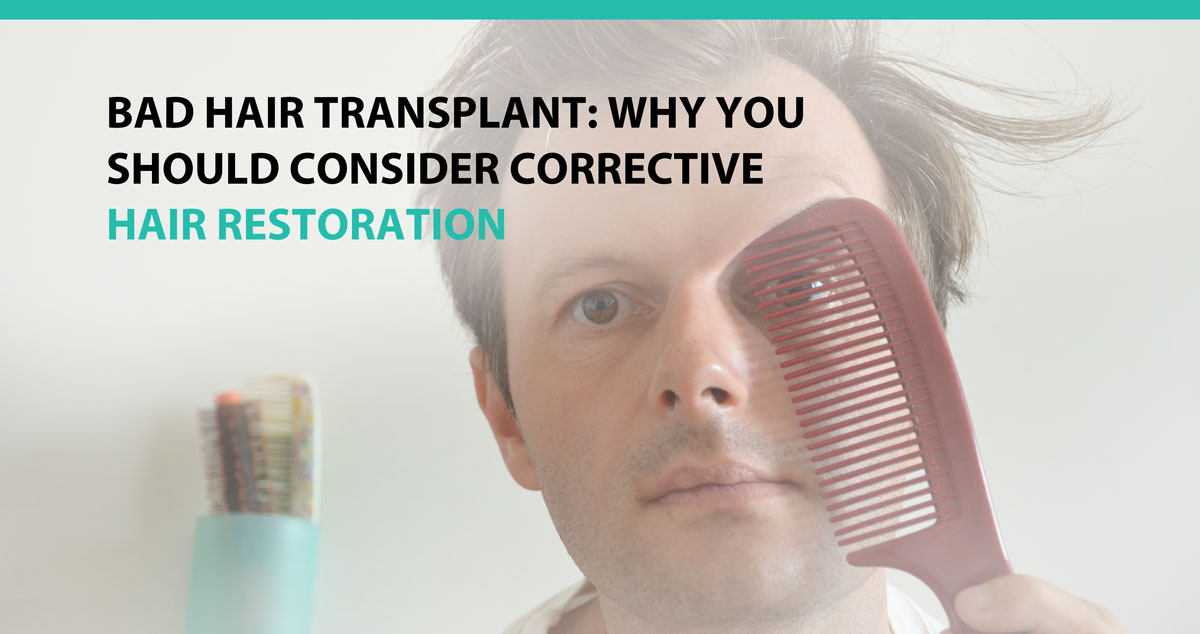
Have you had hair transplant surgery but don’t like the results? Instead of a natural look, some procedures give your hair an awkward appearance that can affect your self-esteem. You might also suffer some unexpected complications. Corrective hair restoration is an effective way of fixing this problem.
What is Corrective Hair Restoration?
This procedure is also referred to as revision hair transplant surgery. It involves removing some of the hair you received in the initial transplant then placing new follicles in the affected areas. This technique combines experience, skill, and advanced technology to give the most natural results. With all these qualities and more, Dr. Williams can perform this procedure with utmost precision. He also considers your safety by performing corrective hair restorations with minimal discomfort.
Common Reasons for Failed Hair Restoration Surgery
There are various reasons for failed hair transplant surgeries, including:
- Outdated Procedures
If you had your hair transplant several years or even decades back, chances are the results were not satisfactory. The mini-grafting procedure involved a process known as strip harvesting. The surgeon would cut a linear strip of skin with hair follicles stuck to it, dissect it into tiny pieces, then graft it onto the scalp. The result was unnatural hair and some scarring. FUE and FUT have vastly superior outcomes.
- Poor Post-Operative Care
While Dr. Williams’ excellent skills give you outstanding results, your post-surgery routine also determines how well you heal. Scratching, washing, and generally disturbing the scalp soon after the procedure causes adverse effects. If you follow the detailed after-care instructions and use the provided medication, your new hair should look and grow naturally in 6 to 9 months.
- Inexperienced Surgeons
Unfortunately, not all hair transplant surgeons have sufficient skills to perform these meticulous procedures. If you opt for the cheapest clinic without conducting thorough research on its reputation, you’re likely to have disappointing results. Dr. Williams’ extensive expertise and experience mean he’s the best at performing sensitive procedures such as graft placement.
- Ineligibility for Certain Procedures
Just as with any other surgery, you need a thorough medical evaluation before a hair transplant. It analyzes factors such as the health of your follicles and future hair loss patterns. If you had the procedure in a clinic that wasn’t completely honest about the chances of success, the resulting hair growth will be unnatural.
How Corrective Hair Restoration Works
Graft excision is one of the aspects of modern corrective hair surgery. Larger grafts are removed using FUE, dissected, and replanted in a more precise and natural pattern. If more hair is needed, it will be extracted from the back of your scalp. We can also opt for hair camouflaging, a process that achieves the same result without extensive graft excisions. Depending on the situation, a combination of the two techniques works best.
Follicular Unit Transplantation (FUT), scalp micropigmentation (SMP), and Follicular Unit Extraction (FUE) are all suitable for fixing scarring. Ultimately, we’ll customize procedures to fit your exact needs.
Why Should I Consider Corrective Hair Restoration?
The biggest benefit of corrective hair restoration is higher self-esteem for its recipients. Healthy, natural-looking hair can improve your physical appearance and general outlook on life. It’s also a permanent solution that has long term cost savings due to its low maintenance.
Get It Right Done at Advanced Medical Hair Institute
If you want to expertly fix a botched hair transplant procedure, look no further than the Advanced Medical Hair Institute. With years of practical experience under his belt, the highly skilled Dr. Joseph Williams incorporates the latest technology for the most natural-looking results. His procedures will provide a long term or permanent solution to your most frustrating hair problems. Please schedule a consultation today for more details.










